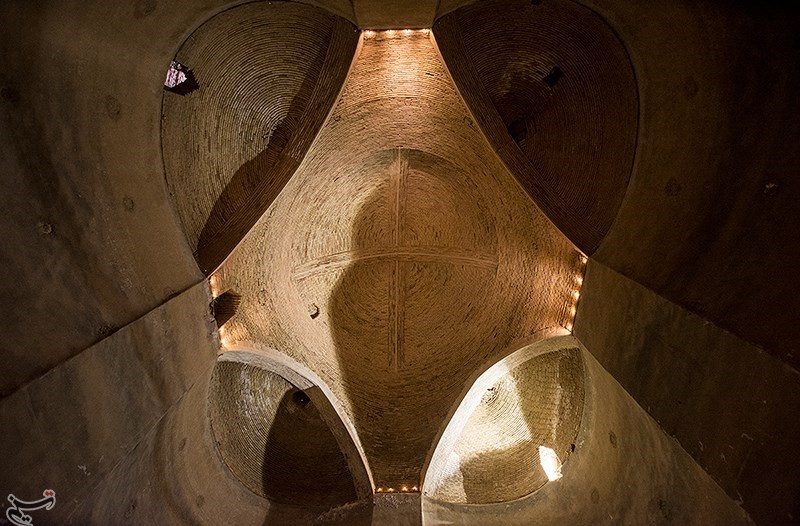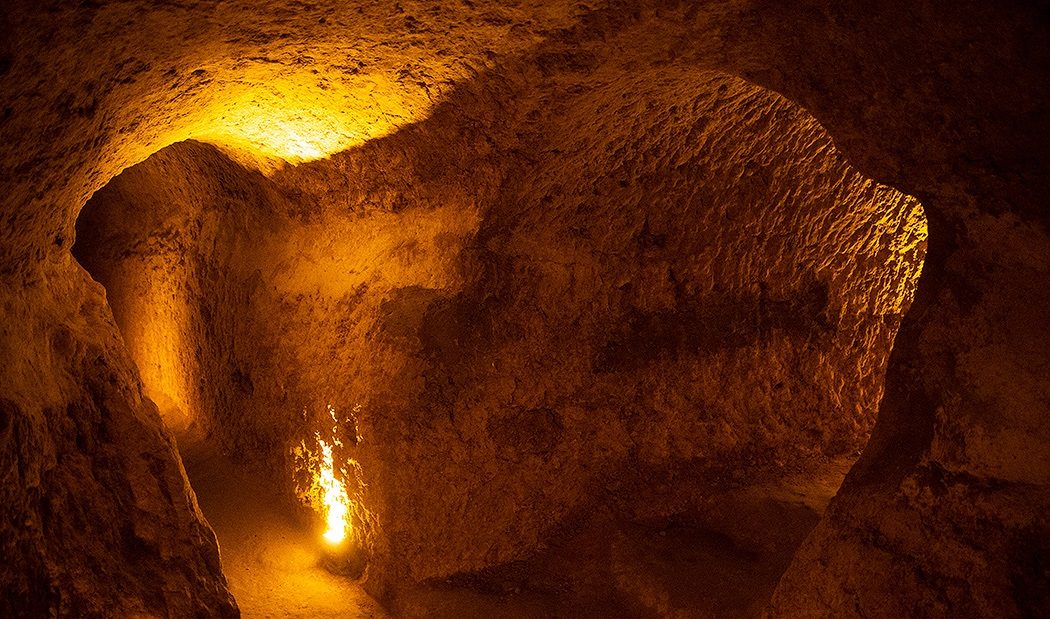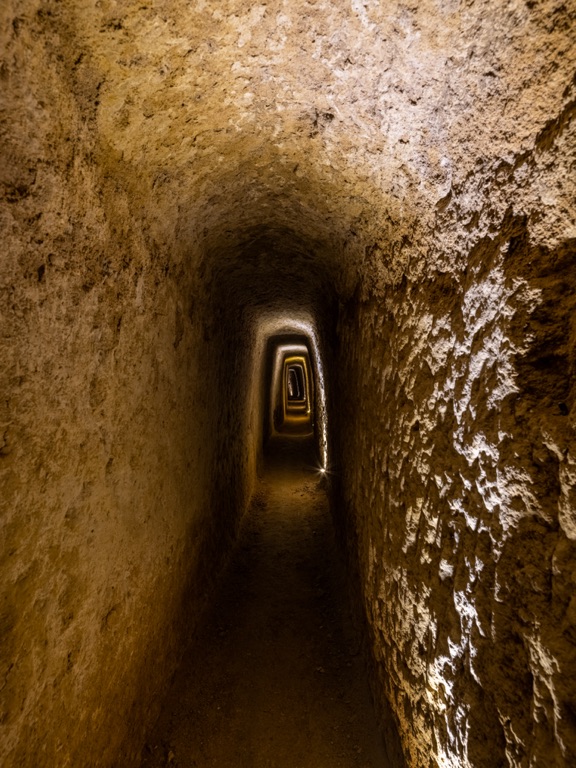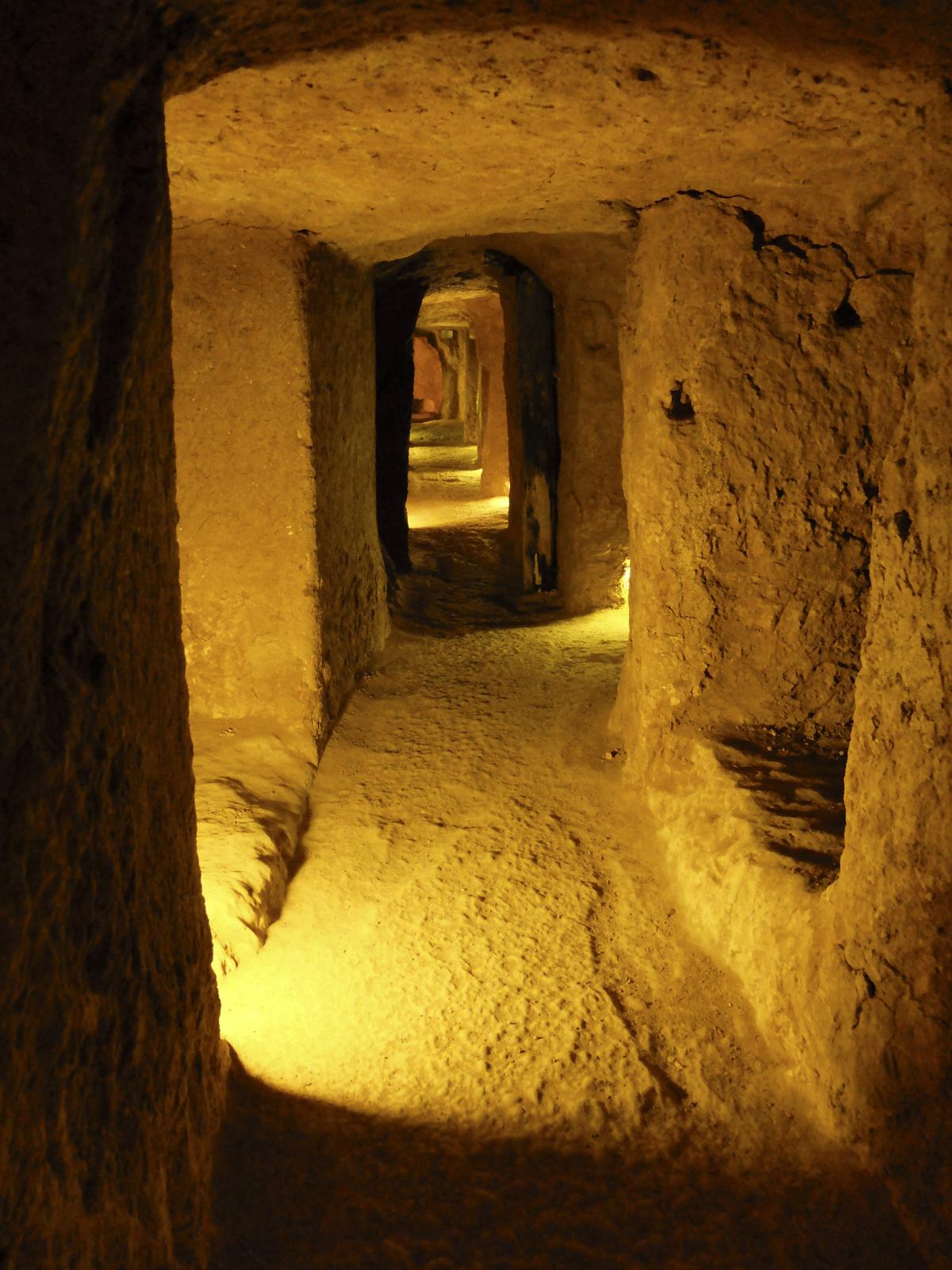Summary
Exploring Nushabad’s Subterranean Wonder
Located in central Iran, Nushabad Underground City, known locally as Ouyi, offers a fascinating glimpse into ancient engineering. This subterranean city dates back to the Sassanian era and remained in use until the Pahlavi dynasty. With its intricate network of tunnels lying up to 18 meters below ground level, Nushabad provided residents with a refuge from the harsh desert climate and invading forces. Remarkably, the city encompasses residential areas, corridors, chambers, and water channels, showcasing sophisticated urban planning and sustainable living practices from bygone centuries. This heritage site is not only a testament to human resilience but also acts as a window into the past, allowing visitors to walk through history.
Get your dose of History via Email

Cultural and Historical Significance
The underground city of Nushabad stands out as a monumental achievement in Persian architecture and design. It reflects the social and defensive needs of the time, with its multiple entrances making it an ideal sanctuary during times of invasion. The use of natural ventilation throughout the city illustrates the inhabitants’ understanding of environmental adaptation. These areas also served as communal spaces for work and socializing, highlighting a close-knit community structure. As visitors navigate the passageways, they encounter the remnants of a society that prioritized collective well-being and strategic innovation, offering insights into the lives of ancient Persians.
Preservation and Tourism Efforts
Today, Nushabad Underground City is not just a cultural treasure but also an emerging tourist destination that speaks to the curious and adventurous. Preservation efforts aim to maintain the integrity of the site while also making it accessible to the public. Initiatives focus on the restoration of decaying structures and the implementation of tourist-friendly facilities that do not compromise the site’s historical essence. These developments are critical for conveying the story of Nushabad to future generations. Visitors can embrace the thrill of exploring the depths while learning about the innovative spirit that safeguarded a community for centuries under the earth’s surface.
Historical Background of Nushabad Underground City
Origins and Development
Delving deep into the heart of Iran’s cultural landscape, the Nushabad Underground City remains a marvel of ancient construction. Believed to have been created during the Sassanian era, the city’s beginnings trace back to nearly 1,500 years ago. Originally designed as a haven from the searing heat and potential invaders, this subterranean structure evolved through centuries. It became a multifaceted sanctuary, ingeniously equipped with living quarters, storage, and escape routes. Its growth reflects the expanding needs of its inhabitants, signifying adaptability and foresight by the architects of old.
Socio-Economic Influence
The underground city served more than just a protective function; it played a crucial role in the economic and social vitality of Nushabad. The corridors and rooms, carefully hollowed out of the earth, supported trades and hosted gatherings. Here, community bonds strengthened, and the underground city buzzed with activity. It was not just a refuge but a place where daily life unfolded, shielded from outside turmoil. This blend of safety and community spirit solidified the city’s place in the socio-economic fabric of the region.
Engineering Mastery of Nushabad’s Underground City
One cannot help but admire the engineering prowess displayed in the Nushabad Underground City. It stood the test of time, thanks to the remarkable use of indigenous materials and construction techniques. Ventilation shafts allowed fresh air deep into the earth while ingenious water channels provided a steady supply of water. These features showcased a deep understanding of sustainable living, which was ahead of its time. The circulation of air and water throughout the city speaks of a sophisticated knowledge of environmental engineering.
Nushabad’s hidden city proves to be a site of continuous historical intrigue. Its labyrinthine essence is not accidental but the result of calculated design meant to confuse intruders. With numerous false paths and deceptive dead ends, the city’s layout was a deliberate defense strategy. This complex maze shielded its residents from enemies, buying precious time during unexpected assaults and enhancing their chance of survival.
Today, Nushabad Underground City is an invaluable historical gem that captivates scholars and tourists alike. As its ancient passageways echo with the whispers of the past, each visit feels like a discovery of hidden chapters of human heritage. Efforts to preserve and promote the site are key to ensuring it remains not just a tourist attraction, but an educational resource that conveys the resilience and ingenuity of our ancestors.
The Discovery of Nushabad Underground City
Unearthing the Subterranean Marvel
In 2006, during a routine well-digging, residents of Nushabad stumbled upon an underground passage. To their amazement, this led to the expansive labyrinth of the Nushabad Underground City, known as Ouyi. This rediscovery brought to light a vast network of hand-carved tunnels and chambers that lay hidden beneath the city for centuries. What began as an accidental find soon became an archaeological sensation, offering a rare peek into ancient living conditions and defensive strategies.
Public and Archaeological Response
The discovery promptly caught the attention of both local authorities and archaeologists. They launched extensive explorations to chart the city’s layout and dimensions. As more areas were unearthed, it became clear that this was no small feat of engineering. This underground sanctuary spanned several kilometers and displayed intricate craftsmanship. It hinted at a community prepared for the perils of their time, one that valued security and resilience.
A Glimpse into Ancient Innovation of Nushabad’s Underground City
The revelation of the Nushabad Underground City drew focus to its innovative ventilation systems and water management. These engineering solutions were remarkable for their era and signified a sophisticated approach to urban planning. Researchers marveled at the ancient builders’ ability to sustain life below the earth’s surface. They used simple yet effective means to ensure airflow and water access, qualities that spoke to their ingenuity.
The discovery also underscored the importance of preservation. As word spread, the city began attracting those eager to delve into its history. This newfound interest posed a challenge to conservators: how to manage exploration while protecting the site’s integrity. It prompted discussions on sustainable tourism and the significance of safeguarding our cultural heritage.
Today, the Nushabad Underground City stands as a monument of historical education. It serves as a testament to our ancestors’ resourcefulness, as well as a unique attraction for visitors worldwide. The discovery of this underground gem highlights the fact that often, below our feet, lies a story waiting to be told.

Cultural Significance, Dating Methods, Theories and Interpretations
Unveiling the Cultural Impact of Nushabad’s Underground City
The Nushabad Underground City, or Ouyi, is not just an architectural phenomenon but also a cultural treasure. It reveals the societal norms and defensive priorities of ancient Persia. As a refuge from invaders and a respite from the relentless desert climate, its very structure speaks volumes about the community’s values and way of life. The city’s communal spaces served as focal points for social interaction, indicating a tightly-knit society that thrived underground.
Investigating the Past: Dating the City
Determining the age of Nushabad Underground City has involved a mix of archaeological survey and scientific analysis. Carbon dating of organic materials has placed parts of the city in the Sassanian era, with some structures and repairs dating to later periods. The consistent expansion and modification of the city reflect a vibrant history where each era left its mark. These findings allow historians to piece together the city’s chronological evolution and the lives of those who sought shelter within its walls.
Theories and Stories Behind the Nushabad’s Underground City’s Origin
While the primary purpose of the underground city seems clear, theories about its origin vary. Some suggest it was a preemptive measure against invasions; others believe the city was an afterthought, following a siege. There’s even speculation that religious practices might have played a role in its creation and use. These theories, while partially supported by findings, contribute to the mysterious allure of the site, prompting further research.
Interpretations of everyday life in Nushabad Underground City range from tales of desperate survival to stories of innovative adaptability. The complex system of water channels and storerooms suggests a planned and sustained existence. Meanwhile, small artifacts found within the tunnels bring personal stories to light, hinting at the individual experiences amidst the community’s collective narrative.
Current research efforts continue to delve deeper into the cultural significance and historical accuracy of Nushabad’s Ouyi. As new passages and artifacts emerge, so too do additional insights, enriching our understanding of this fascinating subterranean world. Each discovery adds a layer to the patchwork of interpretations, offering a more nuanced view of this ancient underground city’s role in Persian history.
Conclusion and Sources
In closing, Nushabad’s Underground City, with its intricate network of tunnels and chambers, stands as a testament to ancient ingenuity and resourcefulness. It provides a unique window into the past, challenging our understanding of historical lifestyles and defense mechanisms. The ongoing studies and excavations continue to shed light on its significance and origins, while also raising new questions about the lives of its inhabitants. As an architectural marvel and a cultural heritage site, it remains pivotal for both scholars in the field and the general public, signifying the unfathomable depths of our ancestors’ determination and skill.

For further reading and to validate the information presented in this article, the following sources are recommended:
Or you can check any of these reputable archaeological and historical texts:
Kleiss, W. (1983). ‘Nush-i Jan, Tepe’. In Yarshater, E. (ed.) The Cambridge History of Iran: Vol 3(2), The Seleucid, Parthian and Sasanian Periods. Cambridge University Press, pp. 802-803.
Wilber, D.N. (1969). ‘The Architecture of Islamic Iran: The Il Khanid Period’. Princeton University Press.
Stein, A. (1940). ‘Archaeological Reconnaissance in North-Western India and South-Eastern Iran’. Macmillan and Co., Limited.
Alibaigi, S., and Sarlak, S. (2018). ‘Revisiting the History of Excavations at Ouyi (Nushabad) in Central Iran’. Journal of Archaeological Research, vol. 20, issue 4, pp. 345–359.
Hozhabri, A. and Bemanian, M.R. (2013). ‘The Strategic and Defensive Innovation of the Sassanid Empire in the Nushabad Underground City’. Journal of Historical Warfare, vol. 7, issue 1, pp. 22-34.

